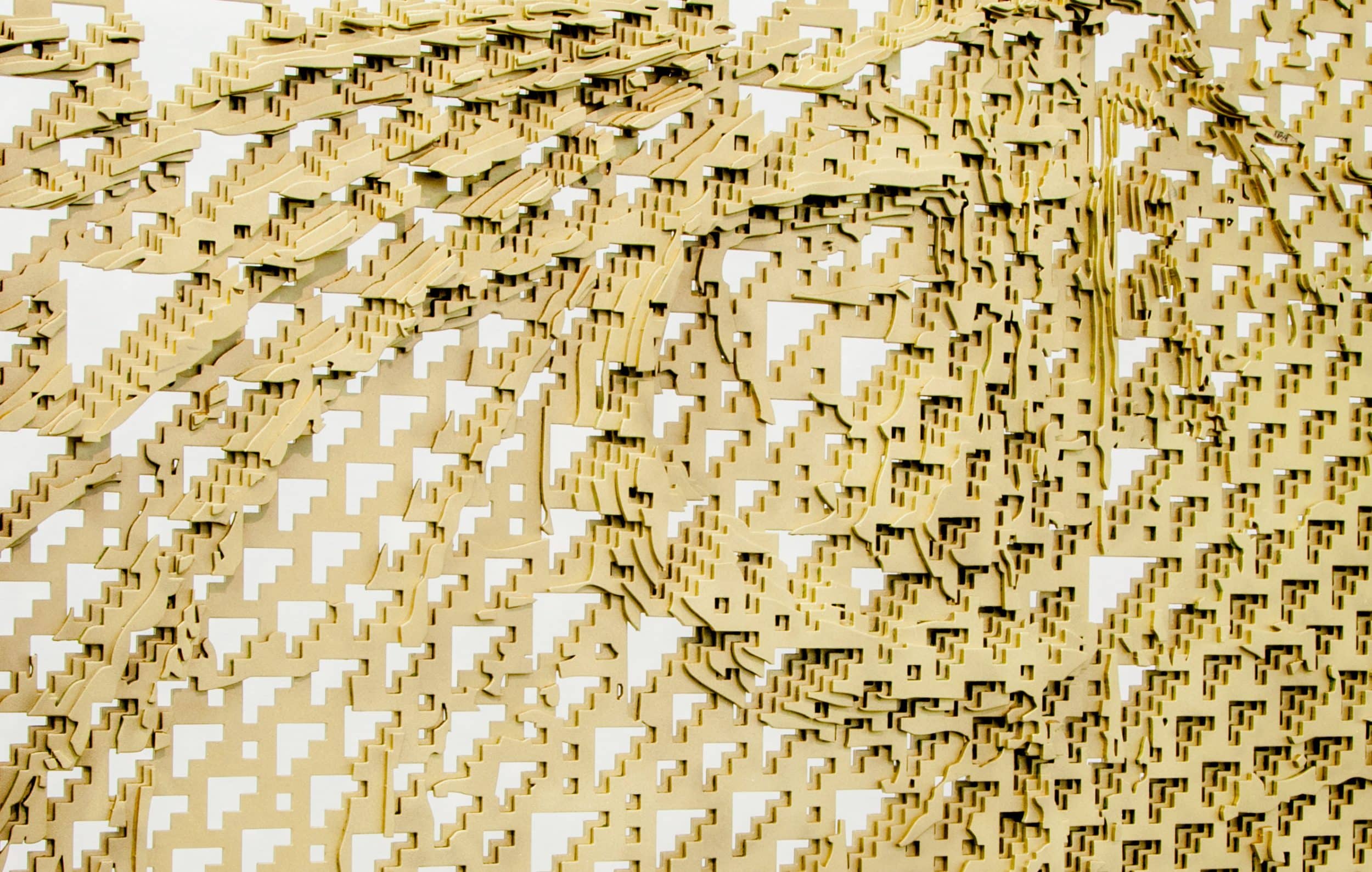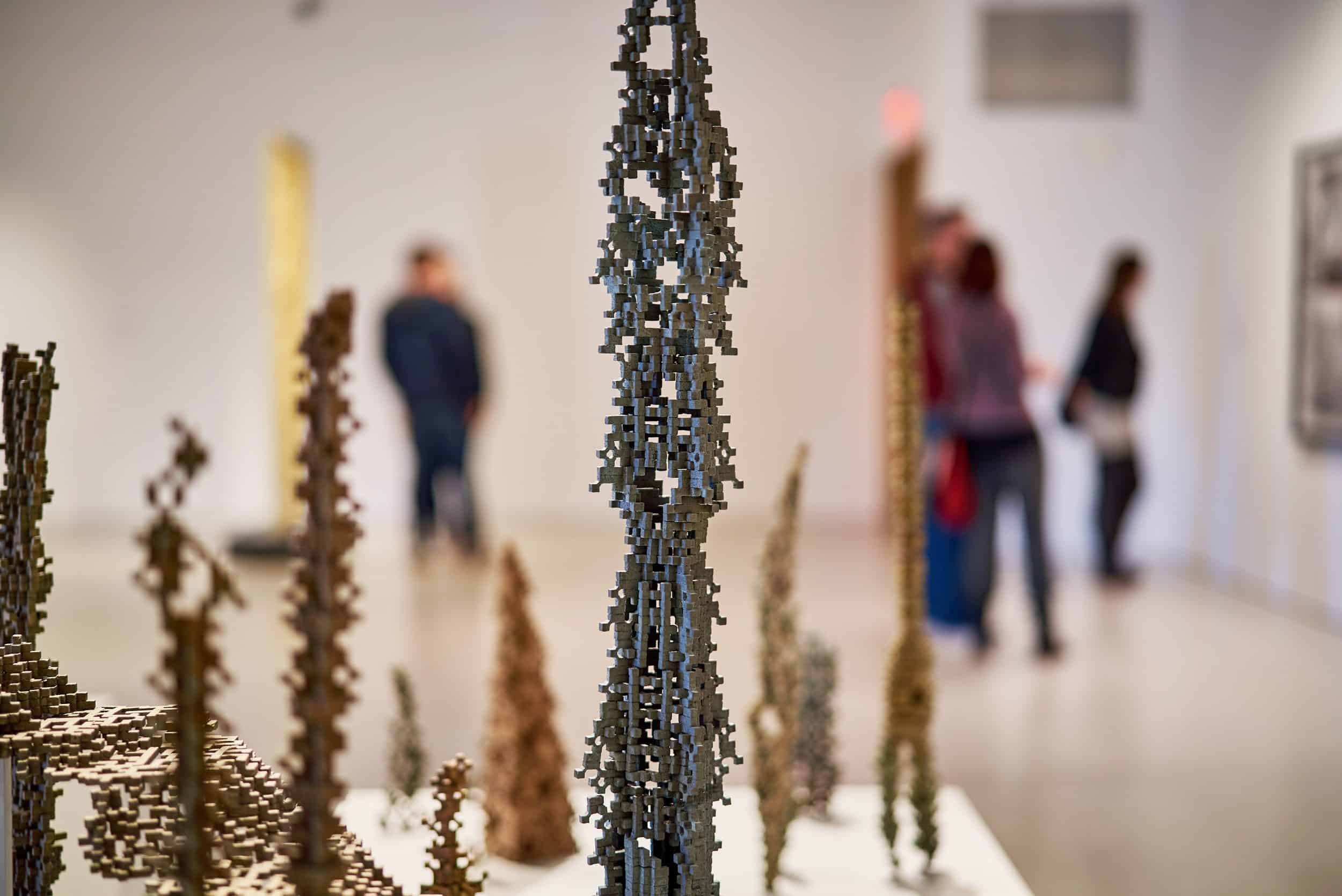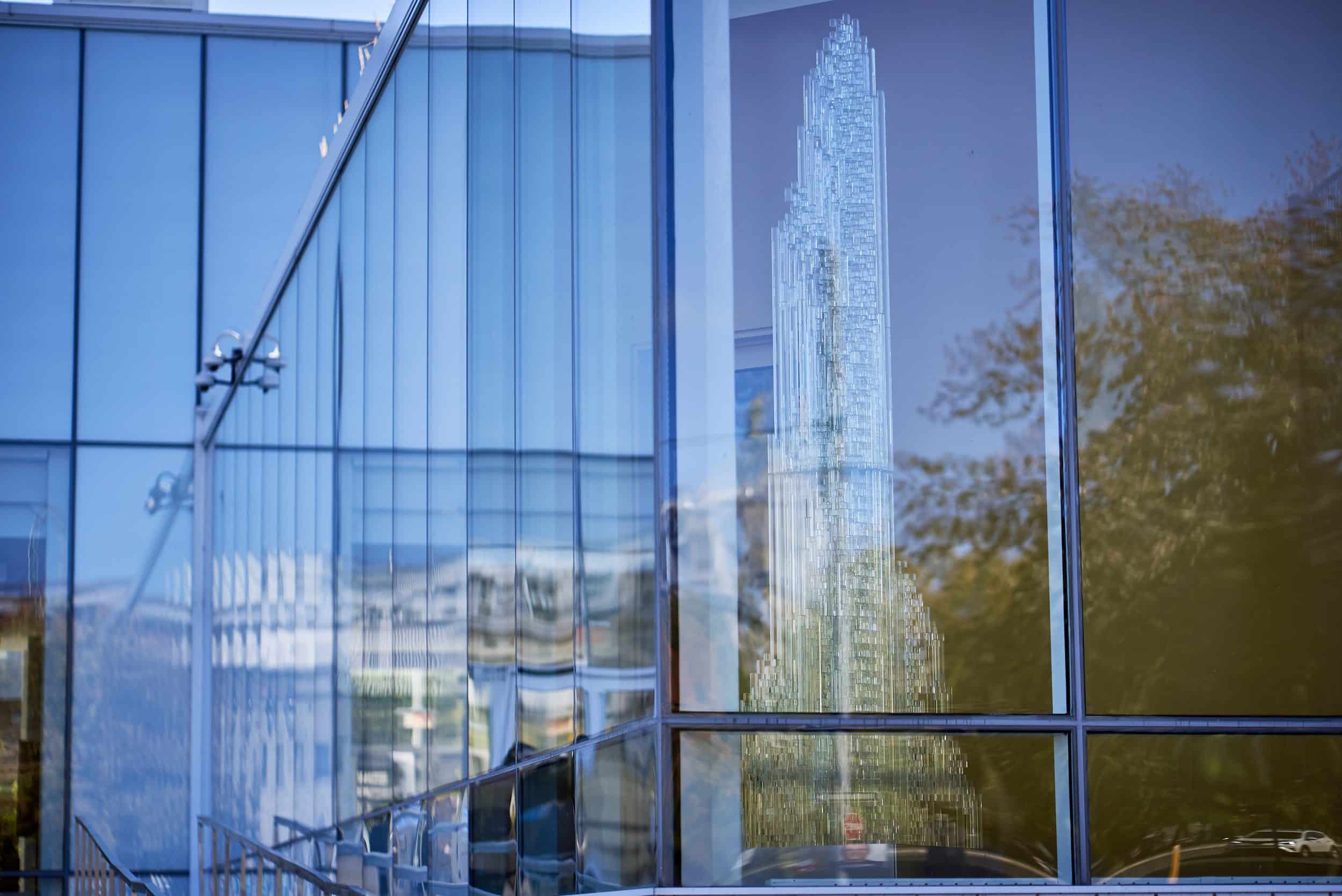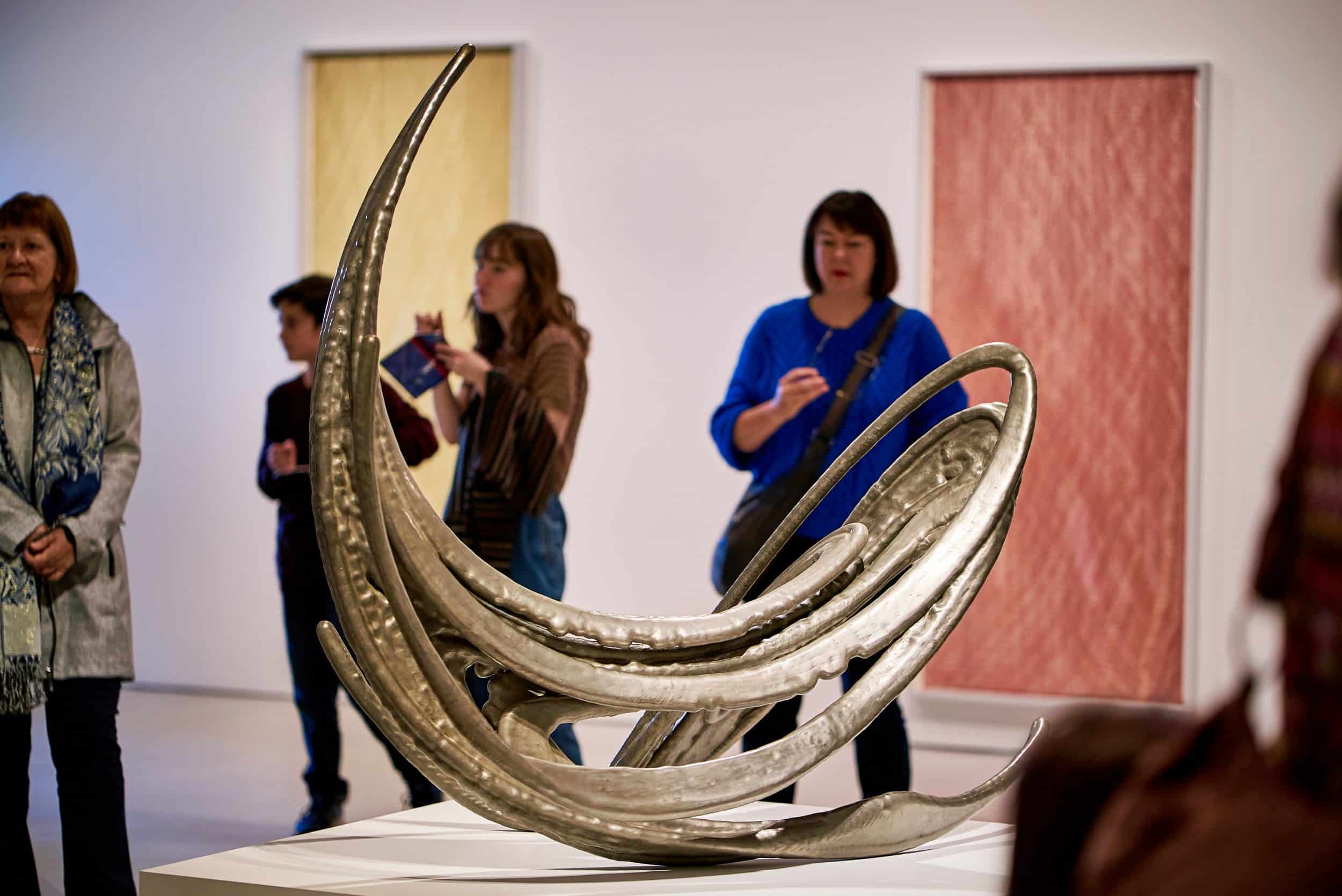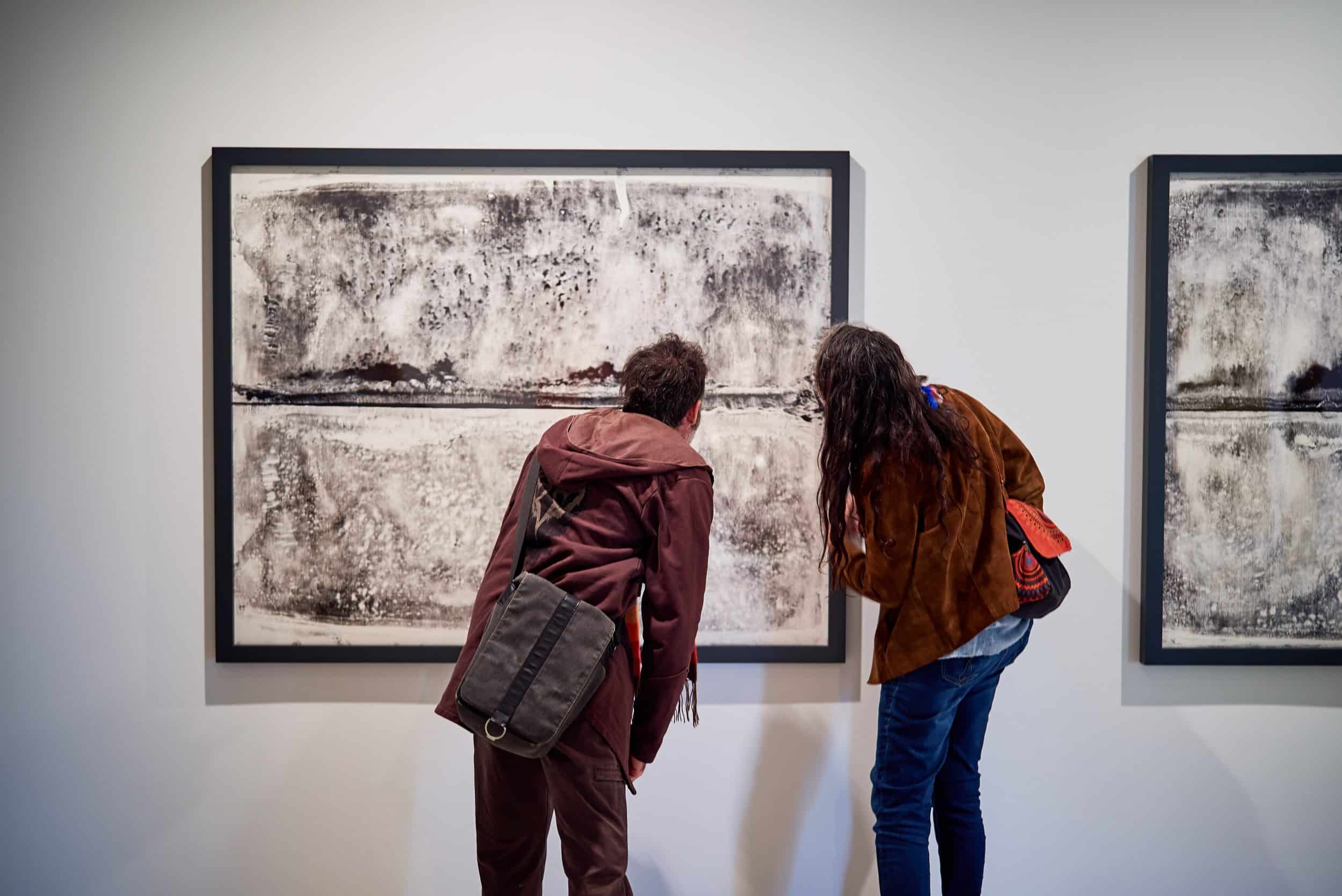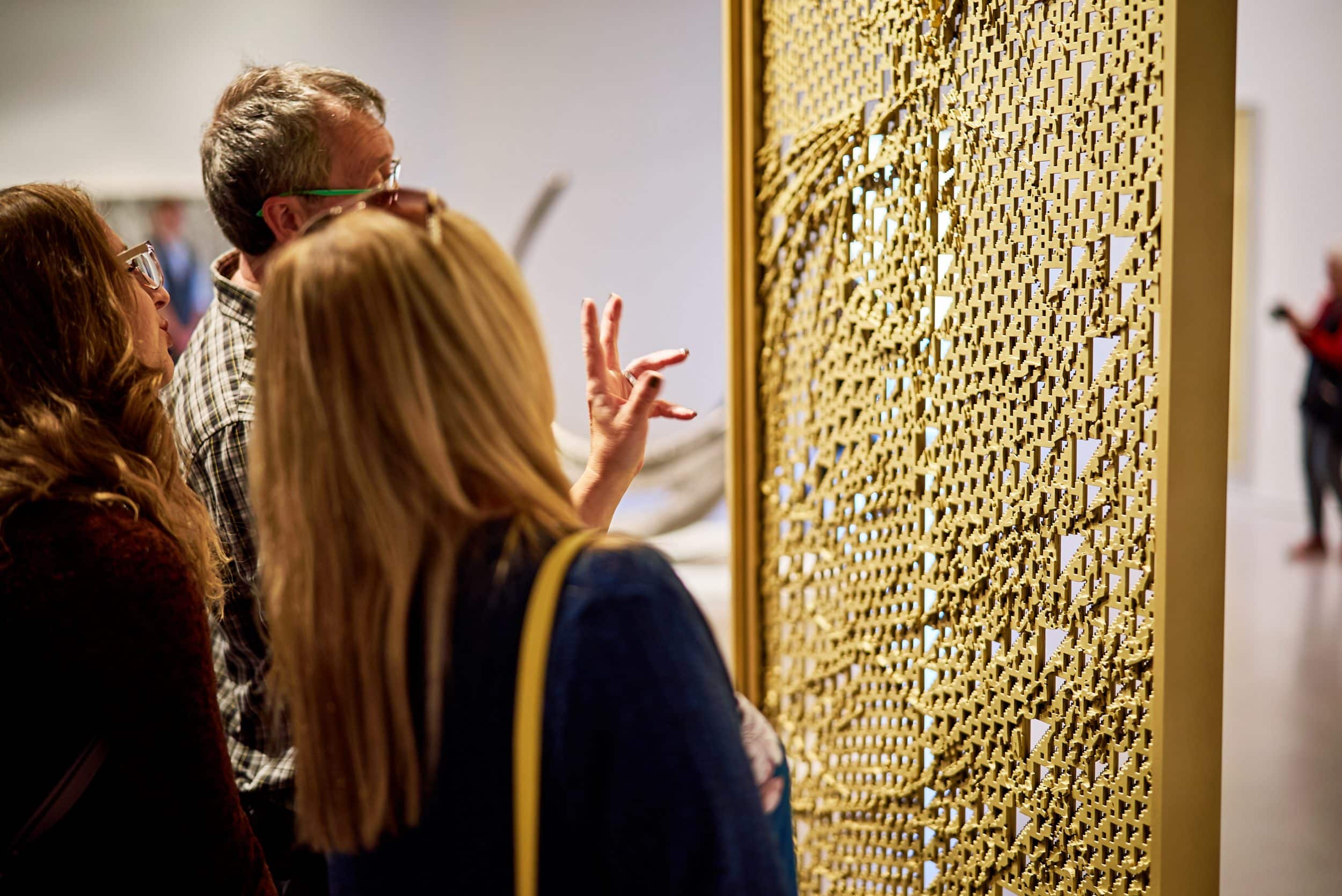About —
This exhibition presents a selection of new and recent works by multidisciplinary artist Patrick Coutu. Comprising sculptures, works on paper and textiles, L’attraction du paysage [The Attraction of the Landscape] makes connections among different facets of the artist’s research, which is inspired by natural phenomena and their scientific representations.
Coutu’s recent practice has explored mathematical concepts meant to represent processes like plant growth or tornado formation. His artworks invoke systems, randomness, unpredictability and chaos. He deploys them spatially and materially, as strategies for making landscapes.
Both abstract and firmly grounded in materiality, Coutu’s works, whether two- or three-dimensional, probe the construction of form. Through seemingly simple gestures, the artist reveals the complexity of seascapes and underwater formations, of landscapes whether rugged or luminous. A fold stands in for the horizon, an algorithm plants a garden.
Read wall labels
Images in the banner
© Patrick Coutu, Éruption II, 2017, brass, 213.30 x 91.44 x 6.35 cm. Photo: Jimmy Limit
© Patrick Coutu, view of the exhibition L’attraction du paysage [The Attraction of the Landscape](Récifs [2015], “Averse”, from the Marines series [2010], Attracteur [2019], Source [2019]), Musée d’art de Joliette, 2019. Photo credit: Romain Guilbault.
With the support of the Fondation du Musée d’art de Joliette.
Biography —
Patrick Coutu (b. 1975) lives and works in Montreal. He holds a bachelor of fine arts, with a specialization in sculpture, from Concordia University.
His sculptural work is both two- and three-dimensional; it questions the processes behind natural structures, and is inspired by research aimed at understanding those processes. Recently he has focused on mathematical models, working toward an explanation of the development of natural structures by translating the models into physical form.
His work is found in several private, institutional and museum collections, including the National Gallery of Canada, the Musée d’art contemporain de Montréal and the Musée national des beaux-arts du Québec. In the spring of 2016 he unveiled a permanent piece, Le jardin du sculpteur, on the Parizeau terrasse at the new Pierre-Lassonde wing of the Musée national des beaux-arts du Québec. He is represented by Division Gallery in Montreal and the Choi&Lager gallery in Cologne, Germany.
Curatorial Text —
The Attraction of the Landscape presents a survey of recent work by multi-disciplinary artist Patrick Coutu. It brings together sculptures, works on paper, and textiles that draw links between various aspects of the artist’s research over the past decade, inspired by natural phenomena and their scientific representations. The word attraction in the title refers both to the human attraction to landscape—its representation and organization—and to the physical forces that regulate its elementary particles. It is both an emotional and analytical view of nature, its underlying rhythms, and the precarious order we impose on it.
Coutu’s recent practice examines mathematical concepts that attempt to translate natural phenomena, such as plant growth or mineral formation. The artist alludes to these systems and uses randomness as a way to build forms. The reproductive pattern of plant cells, for example, is particularly interesting to Coutu as an autonomous and recursive evolutionary structure. Various mathematical models are altered and embodied, as if tested in a material that would not otherwise be affected by these laws. The result is then subjected to a number of formal interventions. Through deceptively simple gestures like folding, imprinting, modeling, and repetition, Coutu reveals the complexity of marine or sub-marine landscapes, as well as austere and solar ones. A fold creates a horizon. An algorithm cultivates a garden.
Simultaneously abstract and rooted in their materiality, Coutu’s works have an elusive and evanescent presence. Whether two- or three-dimensional, they locate us on the dizzying cusp between the infinitely small and the infinitely large. Their scale confronts us with the standard measurement of our body in relation to our environment. Dialoguing with each other and with the outside world, these works create a field of primary elements, an extension of forces that are essential to the landscape: light, horizon, wind, gravity, water, earth, vegetation, and randomness. The artist’s process helps us envision time in its longest forms: through botany, geology, and astronomy. What we see here is the temporality of nature in the making—one that eludes and overcomes us.



